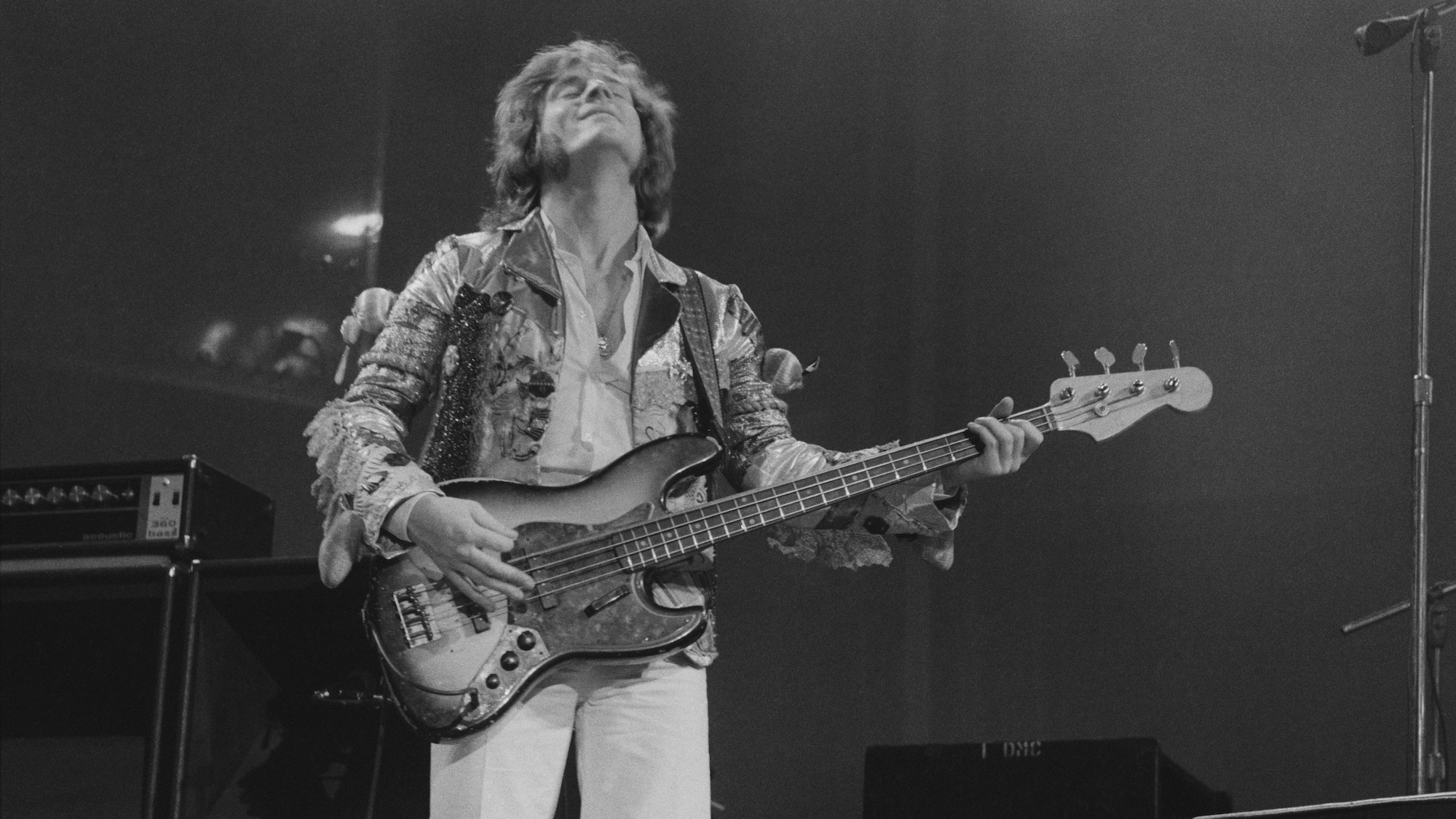“It proved to be too tricky for everyone to hear and perform together without losing track of the beat”: Led Zeppelin's John Paul Jones explains what people get wrong about his Black Dog riff – which originally tripped up even Jimmy Page and John Bonham
In his inaugural Guitar World lesson column, authored in 1996, the legendary bassist also revealed why he used pick to lay the song down in the studio – and why he later would use an eight-string bass to play it live

Starting in 1996, Guitar World was honored to publish a handful of lesson columns authored by Led Zeppelin bassist John Paul Jones. The following is the first of these columns, a breakdown of the infamously twisty riff that underpins the Zeppelin classic, Black Dog. It has been edited in certain instances for use online.
Hello everyone. Over the next several months I plan on sharing with you some of my approaches to playing, writing, and arranging music. I'll be discussing some of the concepts that I've gleaned over the years, illustrating them with some well-known – and a few not-so-well-known – musical examples.
Let's begin this first lesson by talking about what I've often heard people refer to as the classic Led Zeppelin “stomp groove.” A prime example of this can be found in the song Black Dog, from our fourth album.
As you probably already know, Led Zeppelin were heavily influenced by blues music – Robert Johnson, Howlin' Wolf, Elmore James, Muddy Waters, B.B. King, and many others.
I was inspired to write the Black Dog riff after learning an old blues riff in E from the Muddy Waters album, Electric Mud. [Ed. note: Jones later retracted this, citing Howlin’ Wolf’s Smokestack Lightning as his inspiration for the riff.]
It's a swampy, circular, single-note riff and Jimmy Page and I used to love to play it forever! I wanted to write an original riff that had that same type of busy, yet plodding, feel.
What I came up with has an extra beat thrown in at the end of the phrase. It just felt natural to hit the A note an extra time before Robert [Plant] came in again with the vocal.
All the latest guitar news, interviews, lessons, reviews, deals and more, direct to your inbox!
I then came up with the bridge riff, which is in E. This riff is rather tricky-sounding, as it's built from a repeated phrase that is four-and-a-half beats long. Each time the phrase is repeated it's displaced by half a beat.
The E note, which falls neatly on beat one the first time the phrase is played, falls on the second eighth-note of beat one the second time around, on beat two the third time, and on the second eighth-note of beat two the fourth time. This technique of repeating an odd-length phrase in an even time signature such as 4/4 is known as hemiola and is a very effective compositional tool.
When this riff was played against Bonzo's [drummer John Bonham] half-time backbeat and doubled an octave higher on guitar, the result was a very powerful and catchy-sounding “stomp groove.” It seems that quite a few bands have picked up on this concept.
Originally, I wrote the bridge riff with different accents that disguised the beat even more. In the long run, however, playing it this way proved to be too tricky for everyone to hear and perform together without losing track of the beat, so we ended up changing the accent pattern to make the downbeats a little more obvious.
I used a pick for this song to get that growling, trebly tone. Many bass players scoff at the thought of using a plectrum for anything, but I've found it to be quite useful for a lot of things.
For example, during the chorus/solo sections of Black Dog, I would sometimes strum E5 and D5 power chords behind Page's G and D chords, especially when performing live. I really don't think the song would have sounded as punchy and “fat” if I hadn't used a pick.
A few years after we recorded this song, I started using an eight-string bass when performing it live. Since every note I played on that bass would be doubled one octave higher, it really helped fill out the middle register. This was particularly effective when Jimmy would go to solo.
Keep in mind that when it comes to creating music, there are no “rules.”
Look at Led Zeppelin – we broke just about every so-called rule of music and recording that there was, and for the most part, it seemed to have worked to our benefit. The only thing that really matters is that you like what you hear.
- This lesson originally appeared in the December 1996 issue of Guitar World. Subscribe and save.
The bassist for Led Zeppelin, one of rock's greatest bands, John Paul Jones is universally recognized as one of the greatest bassists of all time. He's also a highly regarded multi-instrumentalist, arranger, and producer.
You must confirm your public display name before commenting
Please logout and then login again, you will then be prompted to enter your display name.


